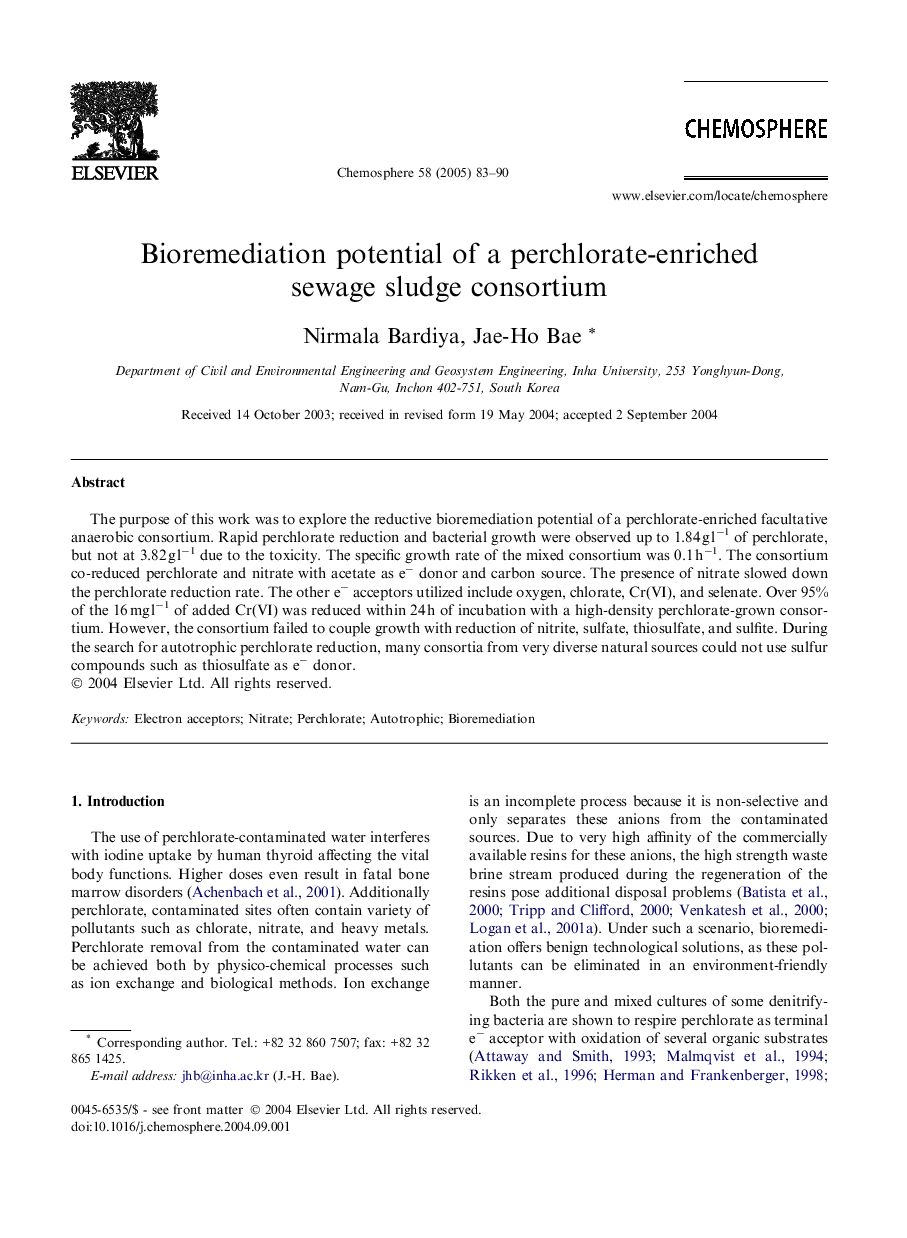| Article ID | Journal | Published Year | Pages | File Type |
|---|---|---|---|---|
| 9451471 | Chemosphere | 2005 | 8 Pages |
Abstract
The purpose of this work was to explore the reductive bioremediation potential of a perchlorate-enriched facultative anaerobic consortium. Rapid perchlorate reduction and bacterial growth were observed up to 1.84 g lâ1 of perchlorate, but not at 3.82 g lâ1 due to the toxicity. The specific growth rate of the mixed consortium was 0.1 hâ1. The consortium co-reduced perchlorate and nitrate with acetate as eâ donor and carbon source. The presence of nitrate slowed down the perchlorate reduction rate. The other eâ acceptors utilized include oxygen, chlorate, Cr(VI), and selenate. Over 95% of the 16 mg lâ1 of added Cr(VI) was reduced within 24 h of incubation with a high-density perchlorate-grown consortium. However, the consortium failed to couple growth with reduction of nitrite, sulfate, thiosulfate, and sulfite. During the search for autotrophic perchlorate reduction, many consortia from very diverse natural sources could not use sulfur compounds such as thiosulfate as eâ donor.
Related Topics
Life Sciences
Environmental Science
Environmental Chemistry
Authors
Nirmala Bardiya, Jae-Ho Bae,
